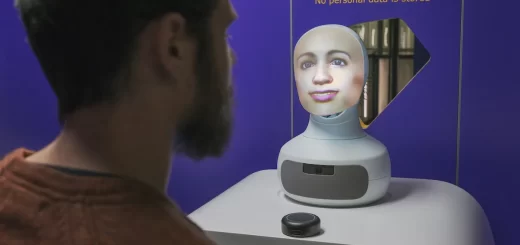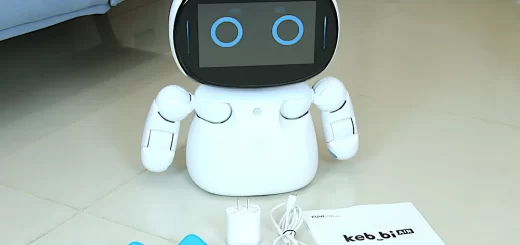SCARA robot applications, What is a SCARA robot used for? and How many axis is a SCARA robot?
SCARA is an industrial robot commonly used in manufacturing for assembly and pick-and-place tasks. It stands for Selective Compliance Articulated Robot Arm (or Selective Compliance Assembly Robot Arm). It’s used for tasks requiring high speed and precision, particularly assembly lines.
SCARA robot
SCARA robots are designed for precise movements, particularly in the X-Y plane. They can be slightly compliant in this plane, allowing minor adjustments during tasks like inserting a peg into a hole. They have two jointed arms allowing a wide range of motion within their horizontal workspace. This enables them to pick up objects, move them around, and place them accurately.
SCARA robots have a compact design that allows them to operate efficiently in tight spaces. Their speed and precision make them perfect for quickly and accurately moving objects from one location to another. The ability for slight compliance helps with delicate assembly tasks.
What is a SCARA robot used for?
SCARA robots are adept at tasks that involve repetitive motions, high precision, and handling of smaller parts. A classic use case for SCARA robots is picking up objects from one location and placing them precisely in another. This is crucial in assembly lines for electronics, automotive parts, or food packaging. they precisely pick up components, circuit boards, or other items and place them in the assembly process.
SCARA robots can quickly sort and distribute items based on size, weight, or other parameters. This is useful in industries like pharmaceuticals or warehouse operations. Their ability to handle objects with delicate movements makes them ideal for intricate assembly tasks. They can be programmed for high-speed insertion, screwing, or fastening components with precision.
SCARA robots can move materials around a workspace, feeding machines or transferring objects for further processing. Their precise movements allow them to perform delicate testing procedures or visual inspections on products.
SCARA robots are used for automating repetitive tasks that require speed and accuracy in a controlled environment. They excel in various industries due to their affordability, compact size, and ease of integration. SCARA robots are the go-to choice for many industrial tasks that require a perfect blend of speed and precision. Their strengths lie in repetitive and delicate tasks, often within a controlled environment.
Their ability to handle objects with high accuracy makes them ideal for various assembly tasks. They can insert parts, tighten screws, or apply adhesives with precise control. The speed and precision of SCARA robots make them well-suited for sorting and distributing objects based on size, weight, or other parameters. This is useful in industries like food processing and pharmaceuticals.
Scara robots can move materials around a workspace, such as loading or unloading machines or feeding materials into processing lines. SCARA robots can handle delicate packing tasks or arrange items onto pallets for shipping due to their precise movements.
SCARA robots are most effective in controlled environments with well-defined tasks. Their range of motion is limited compared to other industrial robots, making them less suitable for tasks requiring complex movements or working in constantly changing environments.
Importance of SCARA Robots
SCARA robots are fast and have accurate movements. Their simpler design allows for quick cycle times and high repeatability, making them ideal for repetitive tasks requiring precision. These robots are space-savers, perfect for fitting into tight production line environments. They are smaller than other industrial robots, making them suitable for facilities with limited space, their simpler design translates to lower manufacturing and maintenance costs.
SCARA robots are known for their user-friendly programming and operation. This makes them ideal for a variety of applications without needing extensive expertise in robotics. Their simpler design makes them less expensive to purchase and maintain than other industrial robots. They are easier to program and integrate into existing production lines compared to more complex robots.
Disadvantages of SCARA Robots
SCARA robots are designed for handling lighter objects. While some stronger models exist, their payload capacity is lower compared to six-axis industrial robots. Their arm structure limits their reach and flexibility, making them unsuitable for tasks requiring a wider range of motion or working in multiple planes. SCARA robots are not as adaptable as six-axis robots. They struggle with tasks requiring complex movements or working in unstructured environments.
SCARA robots excel in tasks within a horizontal plane. Their arm configuration limits their ability to maneuver in complex ways or reach objects in very different orientations. SCARA robots are designed for handling lighter objects. While there are higher payload models available, their capacity is significantly lower compared to six-axis robots.
SCARA robots are a great choice for applications requiring high-speed, precise handling of small parts within a defined work area. They’re cost-effective, easy to use, and offer a high degree of repeatability. However, their limitations in workspace and payload capacity make them less suitable for tasks requiring more range of motion or handling heavier objects.
You can subscribe to Science Online on YouTube from this link: Science Online
You can download Science Online application on Google Play from this link: Science Online Apps on Google Play
Scara robot advantages and disadvantages and What is the structure of the SCARA robot?
Serial Robots review, advantages, disadvantages and what can serial robots do?
Collaborative robot arm (cobot robots) applications, uses, advantages and disadvantages
Automation in manufacturing uses, advantages and disadvantages
Industrial robot (Auto industry) uses, advantages and disadvantages




